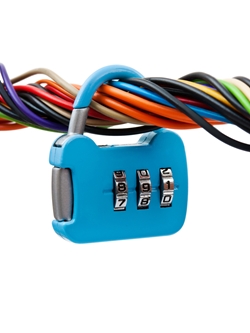Malicious Insiders Threaten More Than PC Performance
 Don’t look now, but the biggest threat to your company’s computer security could be behind you. If you’re in your office, that is. While many businesses invest heavily in cybersecurity defense systems and educate employees on common hacker hazards some don’t do enough to recognize threats that could be coming from inside the company.
Don’t look now, but the biggest threat to your company’s computer security could be behind you. If you’re in your office, that is. While many businesses invest heavily in cybersecurity defense systems and educate employees on common hacker hazards some don’t do enough to recognize threats that could be coming from inside the company.
Most of these “threats” are caused by errors and/or carelessness, wrote eSecurityPlanet contributor Aaron Weiss. It could be something so trivial as botched typing. Weiss wrote that he once received a private partners’ email from a law firm because someone had accidentally mistyped an email address. As most companies use email not only to keep in touch but to send important documents, it’s crucial to practice good habits. Lost devices like tiny USB drives or those stolen merely for their product value, like smartphones, can end up in the wrong hands. This is especially true for organizations in which bring-your-own-device use is prevalent, according to CIO. Even disposed-of laptops and PCs can be risks if users don’t wipe the hard drive clean before they’re taken out of the organization.
What to Do About Deliberate Theft
Unfortunately, not all information leaks are accidental. As the recent Edward Snowden scandal illustrated, people within the organization can have any number of reasons for purposefully breaching data, wrote Weiss. Disgruntled employees can be a potential liability. According to one survey, 20 percent of IT professionals admitted that discontented employees were their foremost insider threat concern. Weiss advised that an active policy of data loss prevention could be a potential solution for quelling insider threats, whether they stem from mistakes or malice. Security solutions that offer rigorous, automated security scanners can identify and root out potential risk factors or data leaks before they become an external problem.
It’s also possible that malcontent personnel could give a malicious outside user backdoor access to computers or networks, or that a hacker could exploit an inadvertent user error to infiltrate the network with malware or spyware. A security suite like iolo technologies’ System Shield uses antispyware and virus scanner tools to constantly look through a computer to identify threats and scrub them from the drive. Overall, it’s important that organizations develop and maintain a well-rounded security plan that targets external and internal threat prevention. System Shield deploys both proactive and reactive threat detection strategies, to better catch both specific malware signatures and suspicious behaviors to help keep all your business computers safe.








